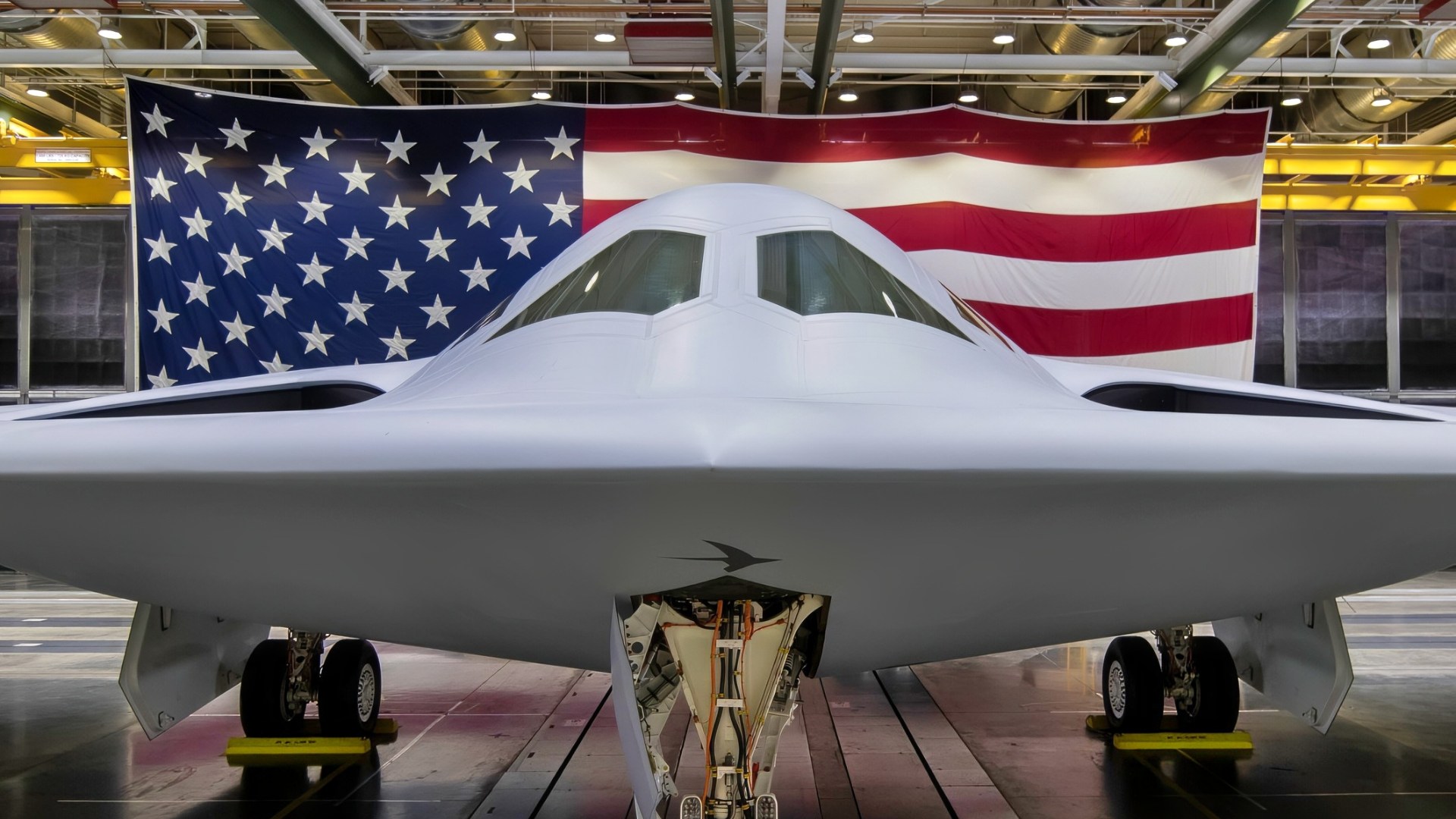Key Points and Summary – The B-21 Raider, the world’s first 6th-generation bomber, is a generational leap beyond its B-2 Spirit predecessor.
-While physically smaller to reduce costs, the B-21 features a “more refined” stealth profile with smoother skin, deeply recessed intakes, and a more resilient, lower-maintenance coating.
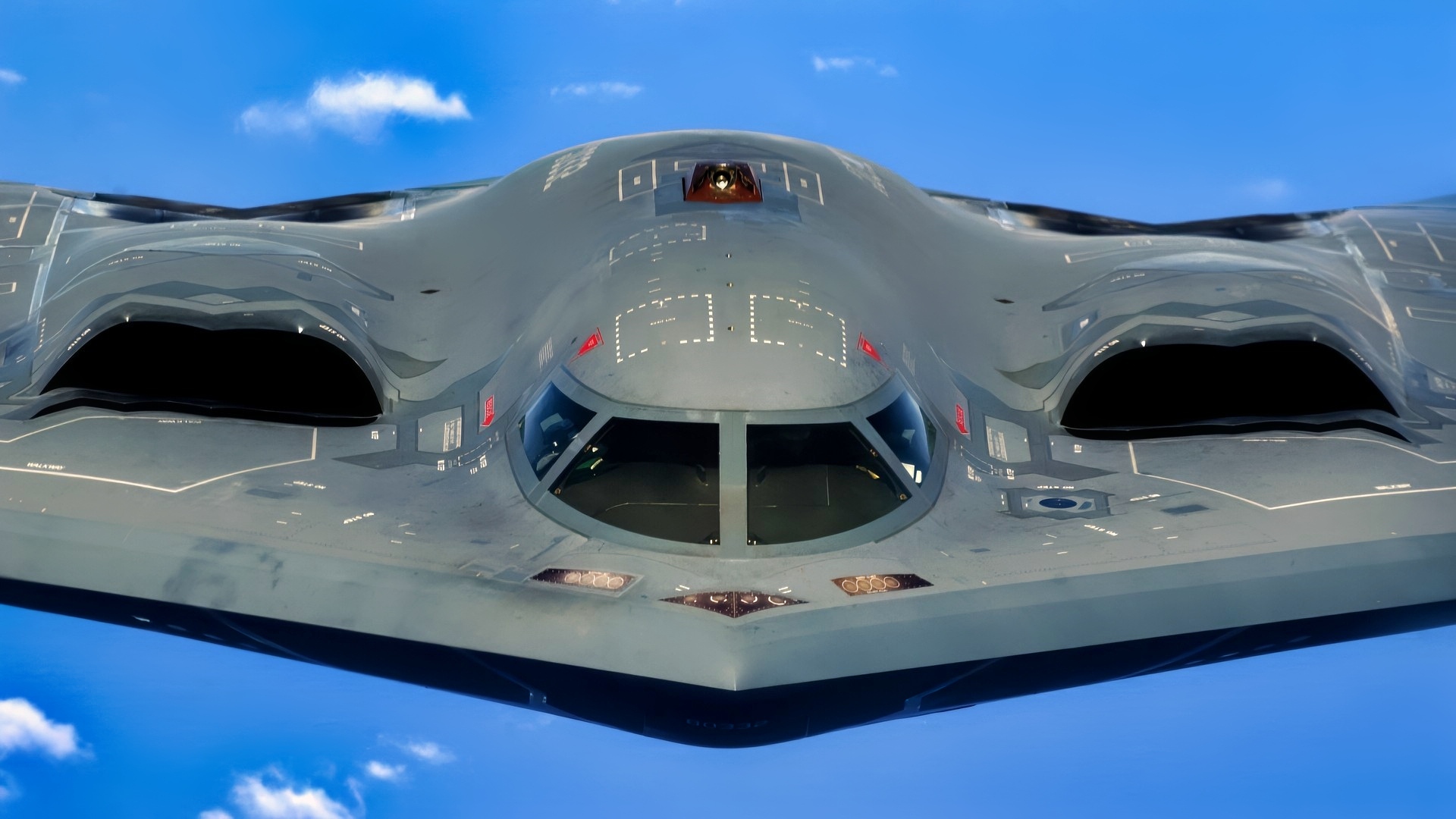
B-2A Spirit Stealth Bomber USAF Image.
-A key operational difference is its mission: unlike the B-2, which flies in radio silence, the B-21 is designed as a fully-networked “node,” able to share real-time data like an F-35.
-Critically, the Air Force plans to build at least 100 B-21s, correcting the B-2’s biggest “flaw”: its tiny, strategically-limited fleet of just 19 bombers.

B-2A, serial #88-0331, ‘Spirit of South Carolina’ of the 509th Bomb Wing, Air Force Global Strike Command, on the parking ramp at Tinker Air Force Base, Oklahoma, during a visit April 11, 2017. The B-2A ‘stealth bomber’ visited the base to allow hundreds of personnel who work in direct support of the aircraft program through continuous software upgrades to see it in person and better understand the aircrafts’ role in the nation’s defense. (U.S. Air Force photo/Greg L. Davis)
The World’s First Sixth-Generation Bomber: the B-21 Raider
The B-21 Raider is on course to be the world’s first sixth-generation stealth aircraft.
Poised to enter service with the United States Air Force, many of the B-21’s features are classified.
However, some open-source reports offer insight into how the Raider differs from its Spirit predecessor and hint at the capabilities the newer bomber has by comparison.
Raiders of the Air
Named after the Doolittle Raiders of World War II fame, the B-21 is an entire generation ahead of the fifth-generation B-2 Spirit bomber.
First and foremost is the Raider’s advanced stealth measures.
Photographs of the bomber show a very smooth airframe skin with minimal seams between sections as well as seemingly more refined air intakes—all of which reduce radar bounce back and help to preserve the B-21’s low radar cross-section, a measure of the bomber’s stealth capabilities.
However, in addition to meticulous attention to detail regarding the bomber’s shape, considerable thought has been given to the bomber’s radar-absorbent coatings and its acoustic and infrared signatures. The B-21’s engine air intakes are deeply recessed within the airframe to hide the bomber’s engine turbine blades—a significant source of radar bounce back—from adversary radar.
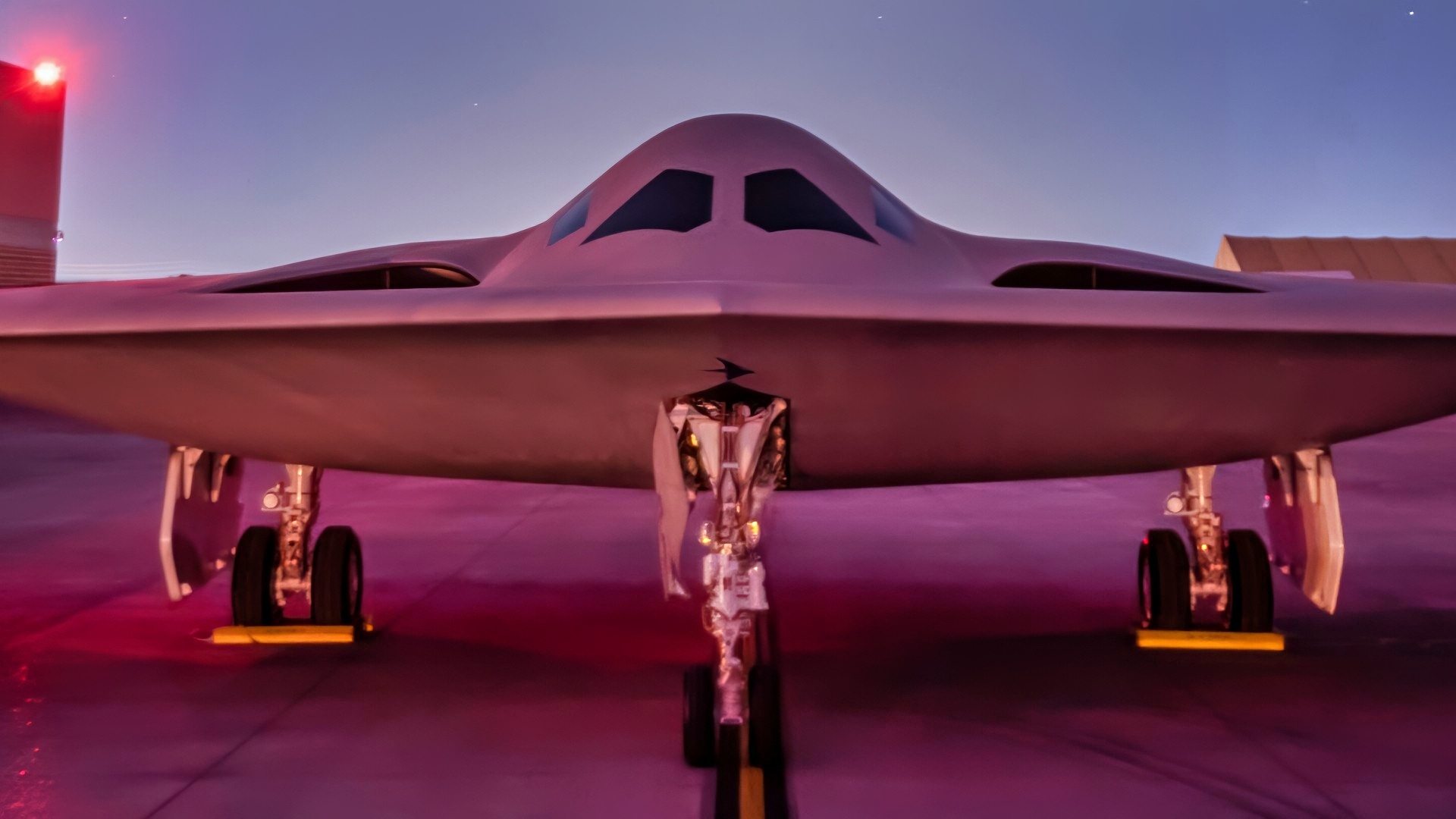
The B-21 Raider was unveiled to the public at a ceremony December 2, 2022 in
Palmdale, Calif. Designed to operate in tomorrow’s high-end threat environment, the B-21 will play a critical role in ensuring America’s enduring airpower capability. (U.S. Air Force photo)
The bomber’s skin is thought to be more resilient than that of the Spirit, with fewer maintenance needs.
And while the B-21 is indeed an expensive platform, its design has sustainment in mind. The bomber will, in all likelihood, be capable of more frequent sorties, made possible by lower maintenance requirements, particularly thanks to the bomber’s resilient skin.
As Northrop Grumman explains, “by embracing the benefits of advanced manufacturing, Northrop Grumman invested in a digital ecosystem for the B-21 throughout the aircraft’s lifecycle. From training and augmented reality tools allowing technicians to visualize tasks and solve problems before ever touching the plane, to easing integration of supplier parts on the aircraft, these advancements have reduced risk, supported efficiency and cultivated expertise throughout the manufacturing workforce.”
Although outwardly much of a muchness, the B-21 will assume the B-2’s operational role, with its capabilities within that role greatly expanded as the airborne leg of the United States nuclear triad. Both aircraft are optimized for penetrating contested airspace and evading enemy air defenses in order to drop nuclear weapons on important adversary targets.
One of the most immediately apparent differences between the two aircraft, however, is the B-21’s smaller size compared to its B-2 predecessor, which may indicate an effort to minimize the bomber’s development costs.
“The design of Northrop Grumman’s B-21 Raider points to a conservative approach on the part of the U.S. Air Force’s Rapid Capabilities Office. The B-21’s resemblance to the original B-2 bomber design is close, but it is a smaller aircraft, with a wingspan estimated at 132 ft. compared with the B-2’s 172 ft., and is approximately half the empty weight,” Aviation Week, an aerospace-focused publication, notes.
“The planform itself is driven by the need to accommodate complex inlets and exhausts and a large weapon bay within the flying-wing profile while staying within a maximum thickness-to-chord ratio compatible with efficient flight above Mach 0.8.”
But while the B-2 was meant to penetrate airspace, it was not meant to communicate with other assets in the air or elsewhere during an operation.
Instead, that bomber would operate under the principle of radio silence, expanded to encompass all communications, a measure intended to preserve the B-2’s stealthy presence.
The B-21, on the other hand, may waive this restriction and operate more like the F-35 fighter, capable of scooping up and sharing real-time battle-space information with other aircraft.
Advanced communication systems that were not available when the B-2 entered service could afford the B-21 capabilities that were previously not possible, and as a consequence, expand and add definition to views of the battle space.
In 2 Words: The Numbers
Perhaps one of the most underappreciated differences between the Raider and the older Spirit bombers will be each platform’s acquisition numbers.
Whereas the B-2’s production was dramatically truncated by the end of the Cold War, there are now only 19 operational B-2 Spirit bombers.
Congress has previously indicated it would like to allocate sufficient funds for a 100-bomber buy.
That figure, however, may be a floor rather than a ceiling, given the increasingly thorny threat environment the United States faces today.
With a revanchist Russia threatening Europe, and an increasingly bellicose China seemingly intent on making its mark on Asia, the need for significantly more B-21 bombers appears acute.
Some reports indicate that B-21 procurement numbers could reach 145 aircraft, although those numbers may not yet be definitively confirmed.
B-21 Raider Stealth Bomber Photo Essay
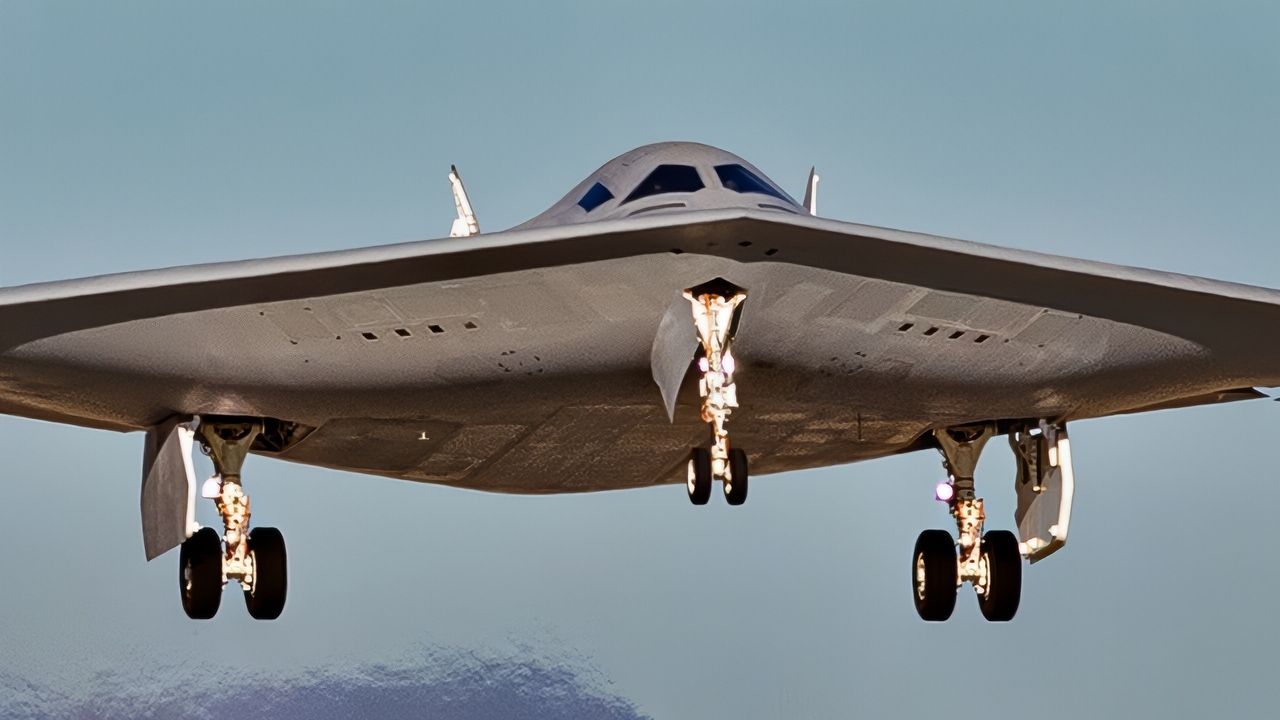
A second B-21 Raider test aircraft takes off, Sept. 11, from Palmdale, Calif., to join the Air Force’s flight test campaign at Edwards Air Force Base, Calif. The addition of the second test aircraft expands mission systems and weapons integration testing, advancing the program toward operational readiness. (Courtesy photo)

U.S. Air Force Airmen with the 912th Aircraft Maintenance Squadron prepare to recover the second B-21 Raider to arrive for test and evaluation at Edwards AFB, Calif., Sept. 11, 2025. The arrival of a second test aircraft provides maintainers valuable hands-on experience with tools, data and processes that will support future operational squadrons. (U.S Air Force photo by Kyle Brasier)
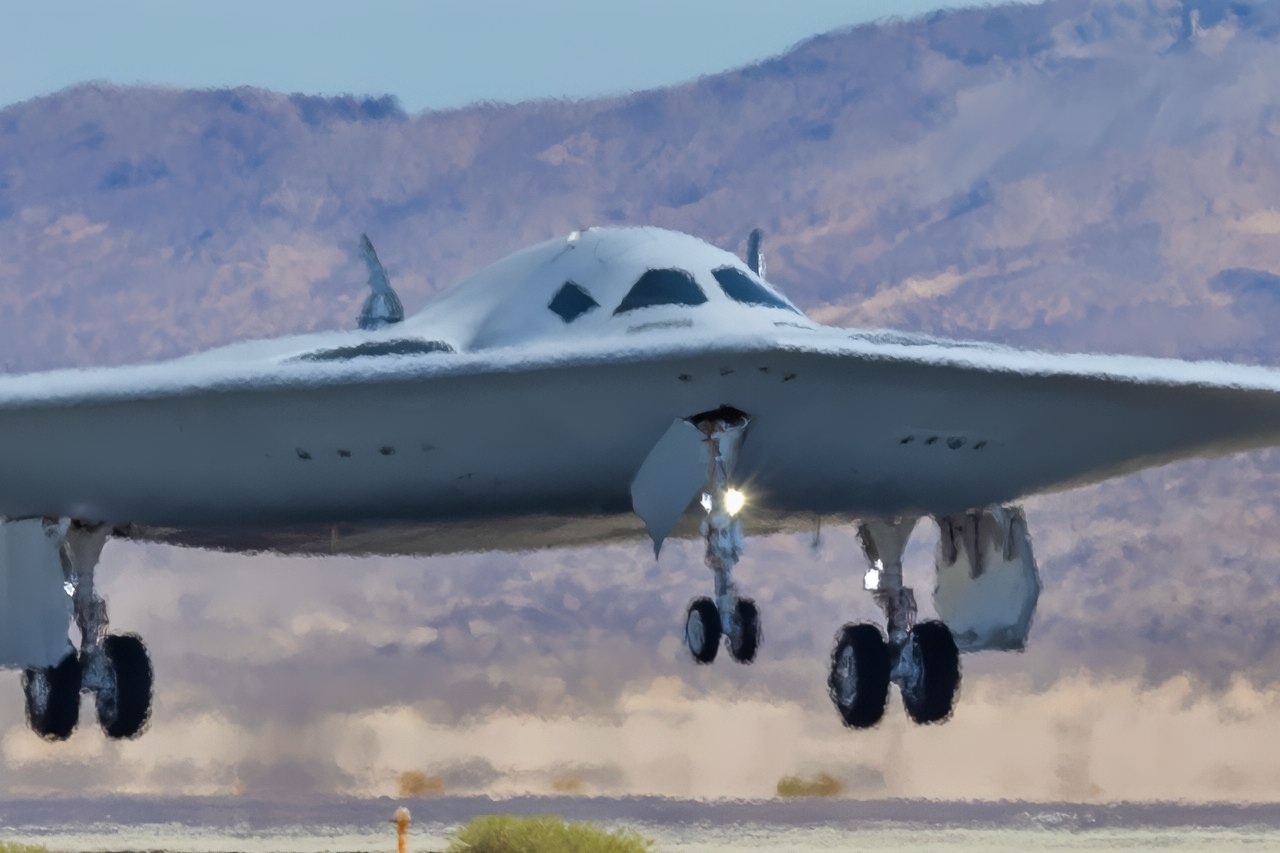
A B-21 Raider test aircraft lands at Edwards Air Force Base, Calif., during ongoing developmental flight testing, Sept. 11, 2025. The B-21 will be the backbone of the bomber fleet; it will incrementally replace the B-1 Lancer and B-2 Spirit bombers. (U.S Air Force photo by Todd Schannuth)

A second B-21 Raider, the nation’s sixth-generation stealth bomber, joins flight testing at Edwards Air Force Base, Calif., Sept. 11, 2025. The program is a cornerstone of the Department of the Air Force’s nuclear modernization strategy, designed to deliver both conventional and nuclear payloads. (Courtesy photo)

A second B-21 Raider, the world’s sixth-generation stealth bomber, test aircraft arrives at Edwards Air Force Base, Calif., Sept. 11, 2025. The addition of the second test aircraft expands mission systems and weapons integration testing, advancing the program toward operational readiness. (Courtesy photo)
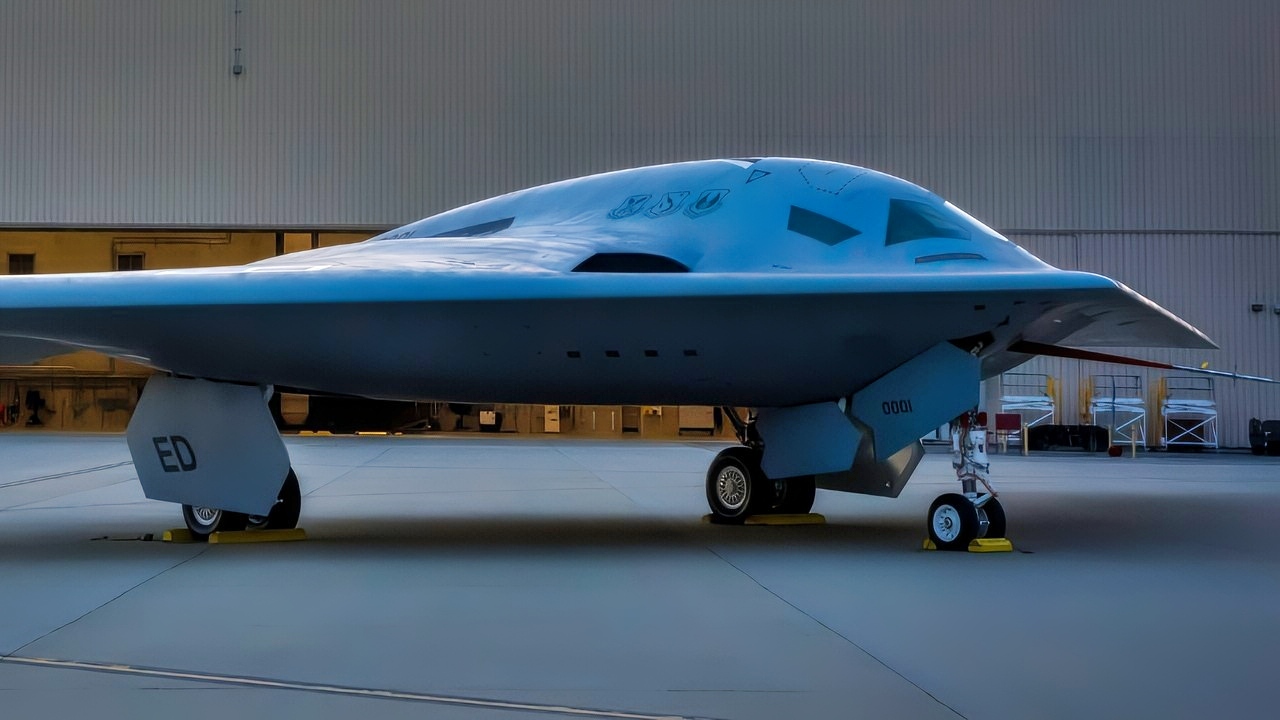
The B-21 Raider is designed with an open systems architecture, enabling rapid insertion of mature technologies and allowing the aircraft to be effective as threats evolve. The bomber was designed up front for supportability and maintainability-based upon decades of lessons learned and best practices from prior aircraft programs-to improve long-term affordability and outcomes in operations and sustainment. The B-21 first flight is anticipated to take place in calendar year 2023. (U.S. Air Force photo)
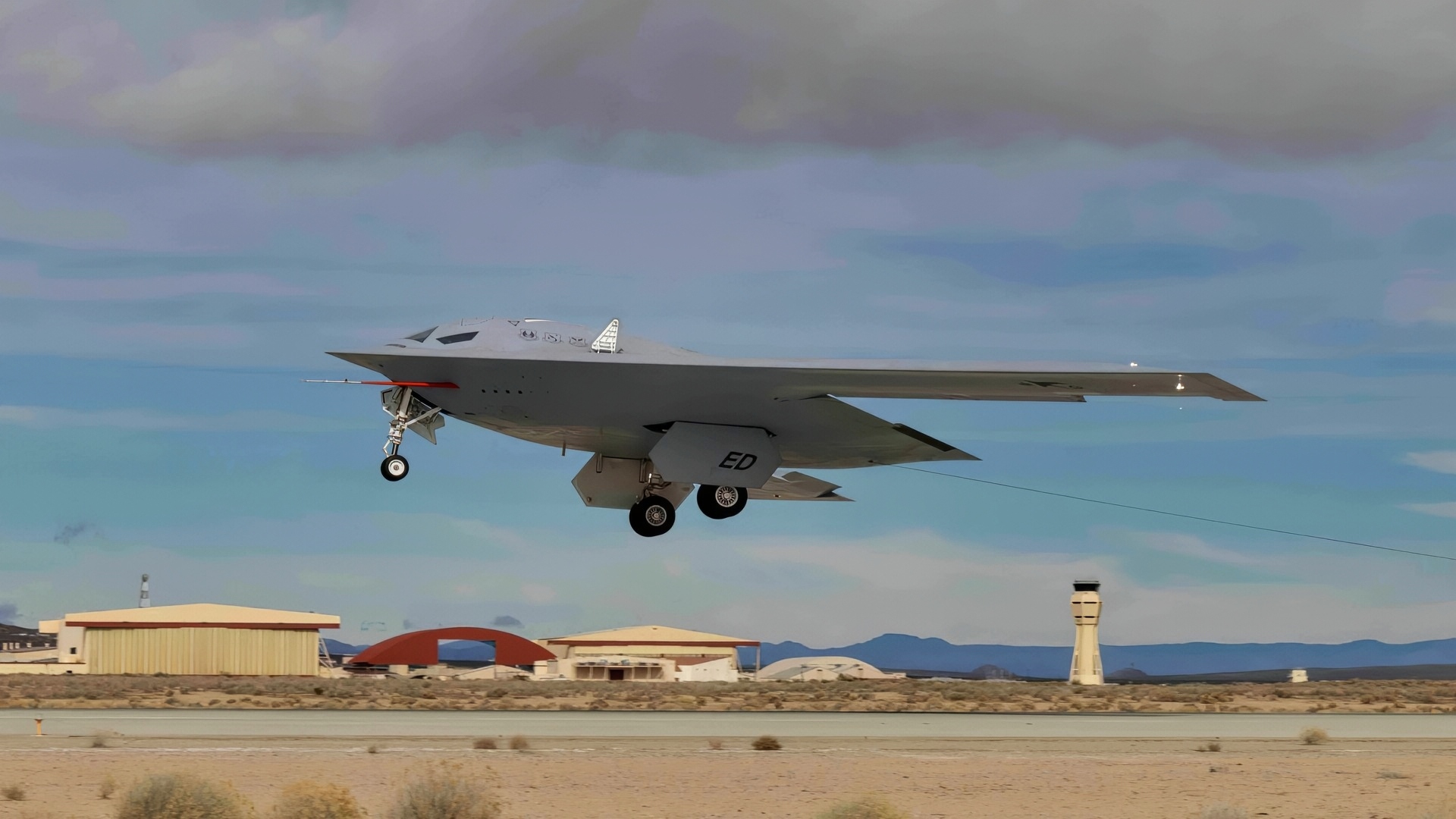
A B-21 Raider conducts flight tests, which includes ground testing, taxiing, and flying operations, at Edwards Air Force Base, California, where it continues to make progress toward becoming the backbone of the U.S. Air Force bomber fleet. The B-21 will possess the range, access, and payload to penetrate the most highly-contested threat environments and hold any target around the globe at risk. The B-21 program is on track to deliver aircraft in the mid-2020s to Ellsworth Air Force Base, South Dakota, which will be the first B-21 main operating base and location for the B-21 formal training unit. (Courtesy photo)
About the Author: Caleb Larson
Caleb Larson is an American multiformat journalist based in Berlin, Germany. His work covers the intersection of conflict and society, focusing on American foreign policy and European security. He has reported from Germany, Russia, and the United States. Most recently, he covered the war in Ukraine, reporting extensively on the war’s shifting battle lines from Donbas and writing on the war’s civilian and humanitarian toll. Previously, he worked as a Defense Reporter for POLITICO Europe. You can follow his latest work on X.
More Military
‘Long Way from Production’: China’s J-36 Might Be ‘Paper Tiger’ Stealth Fighter
‘Mach 2’ JAS 39 Gripen Is a Rocket Fighter Plane
New ‘Ferrari’ F-35 Stealth Fighter Is Aimed Right at Russia and China
Putin’s Poseidon Nuclear “Doomsday” Torpedo Looks Like a Bluff
The Air Force’s B-21 Raider Stealth Bomber Plan Doesn’t Make Any Sense


